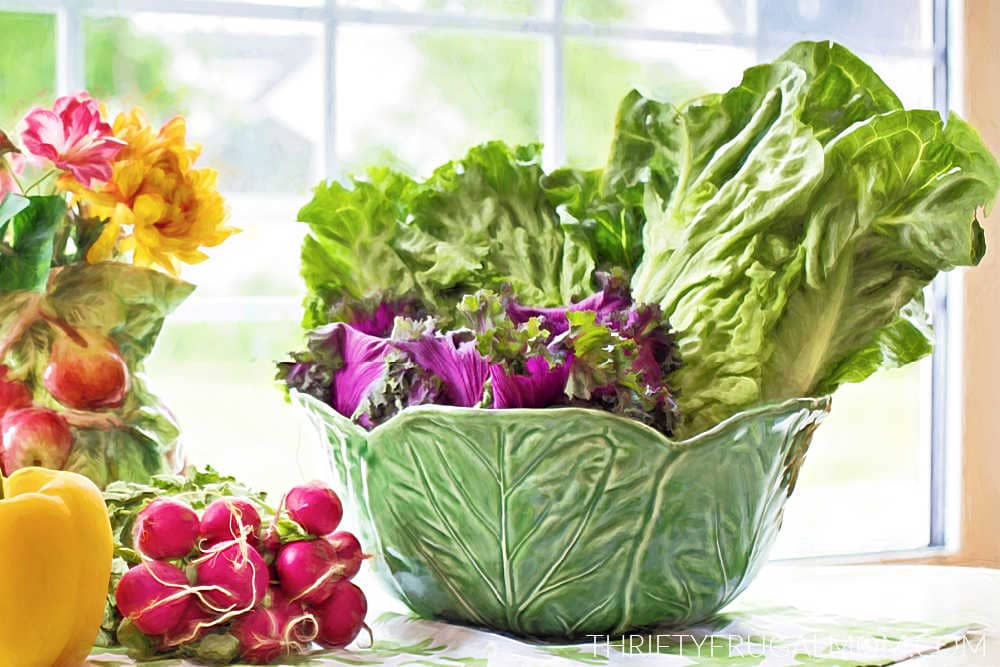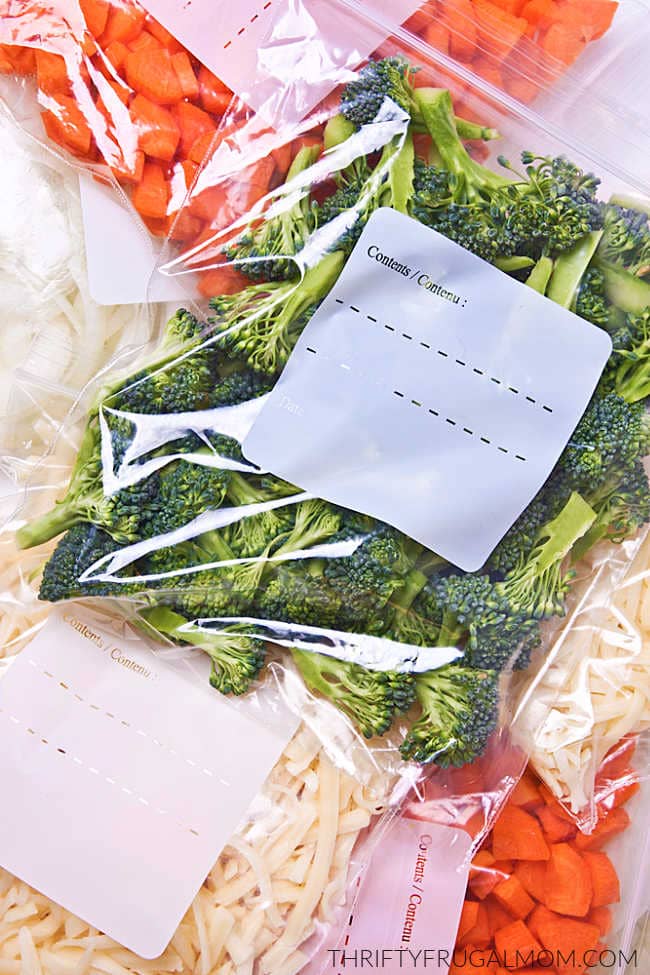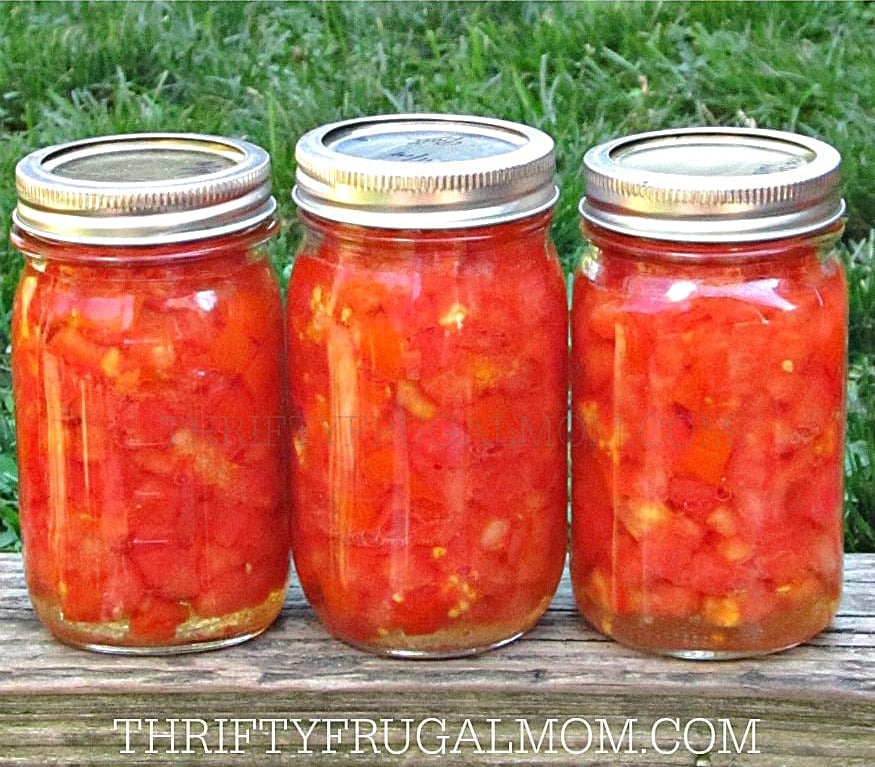These easy tips will help you save money on produce and allow you to get more fruits and vegetables inexpensively! Yes, you really can eat healthy on a budget!

One of the complaints that I often hear from people that are trying to live frugally and save money on groceries, is that it is hard to eat healthy on a budget.
And while I understand that feeling, there are actually some really great ways to get cheap fruits and vegetables.
1. Shop the Sales
Before going grocery shopping, take a minute to check the grocery store flyer to see what fruits and vegetables are on sale that week.
Then, to maximize savings, plan your menu around what on sale.
2. Freeze It Before It Spoils
Have produce that is going to go to waste before you are able to use it? Try freezing it!
Berries freeze really well and frozen grapes are tasty to snack on. If you like smoothies, frozen bananas and other fruits work great in them!
I also have frozen kale and spinach and then used them in soups or recipes like this Bisquick Alfredo Chicken Casserole. It worked really well!
Diced onions, carrots and peppers all freeze well. Shred zucchini, freeze it and then use it for zucchini cakes, muffins, etc. You can even freeze avocados- you’ll just need to use them for guacamole or similar things that allow you to mix it with something else.
3. Buy Seasonally
In-season produce is generally less expensive as there is less cost involved with growing and shipping it. The other bonus is that it typically tastes better too!

4. Buy in Bulk
For some things, it’s much cheaper to buy bulk quantities. For example, a 10 or 25 lb. bag of potatoes is typically cheaper than a 5 lb. bag. And often over Christmas, boxes of oranges are a great price.
In one area that we used to live in, I could get a 20 lb. box of fresh blueberries for considerably less than I would typically pay for fresh or even frozen blueberries!
When it makes sense and is less expensive, buy the larger package. You can even split the produce with friends or family if it’s too much for you to use it all yourself.
5. Learn to Preserve Food
When you find fresh produce on sale or seasonal produce for a great price, buy extra and preserve it by freezing it or canning it.
Here are my canning and freezing tutorials if you are interested in learning more:
- How to Can Diced Tomatoes
- How to Make and Can Tomato Juice
- How to Can Peaches
- How to Freeze Blueberries
- How to Freeze Green Beans
6. Buy Frozen
Did you know that frozen fruits and vegetables are typically not only cheaper but also are just as nutritious? In fact, many times they are actually more nutritious because they are harvested at the peak of ripeness.
The other great thing is that you don’t have to worry about the produce spoiling before you get it used.
I like to buy frozen broccoli, cauliflower and green beans as well as various fruits. (I love using the fruit for my easy Frozen Fruit Smoothie!)
7. Weigh Prepackaged Bags
Those three-pound bags of onions never all weigh exactly 3 lbs. Same with packages of apples, oranges, carrots and lots more.
Weighing a couple of bags and choosing the heaviest one is a simple way to get more for the same price. Occasionally I’ve been able to get ½ lb. more this way!

8. Grow Your Own
Obviously, gardening has some upfront costs such as garden tools, seeds/plants etc. But it can be a great way to save money on produce, especially if you choose to grow items that are typically more expensive at the store.
And even if you don’t have much room, it doesn’t take much space to grow things like pepper and tomatoes. You can even grow a variety of vegetables in pots on a patio or balcony!
I love that my homegrown produce typically tastes so much better and that I can grow it organically as well!
9. CSA | Farmer’s Markets | Local Produce Farms
As with gardening, the produce from CSAs, farmer’s markets and local produce farms is typically much fresher than the grocery store, which is wonderful! I also love that buying produce this way supports local growers.
However, these options are not always the least expensive way to go. But it’s worth checking to see what’s available in your local area and comparing prices.
Other Money Saving Articles You’ll Enjoy:




Leave a Reply